IELTS Quang Bình
(update 2024) researcher on the tree crown | ielts reading practice test free.
Table of Contents
A The forest canopy—the term given to the aggregated crowns of trees in a forest—is thought to host up to 40 per cent of all species, of which ten percent could be unique to the forest roof. “We’re dealing with the richest, least known, most threatened habitat on Earth,” says Andrew Mitchell, the executive director of the Global Canopy Programme (GCP), a collection of groups undertaking research into this lofty world. “The problem with our understanding of forests is that nearly all the information we have has been gleaned from just two metres above the soil, and yet we’re dealing with trees that grow to heights of 60 metres, or in the case of the tallest redwood 112 metres. It’s like doctors trying to treat humans by only looking at their feet.”
B Tropical rainforest comprises the richest of ecosystems, rivalled only by coral reel for its diversity and complex interrelationships. And a great deal of that diversity lives up in the canopy—an estimated 70-90 percent of life in the rainforest exists in the trees; one in ten of all vascular plants are canopy dwellers; and about 20-25 per cent of all invertebrates are thought to be unique to the canopy.

C The first Briton to actually get into the canopy may have been Sir Francis Drake who, in 1573, gained his first glimpse of the Pacific Ocean from a tall tree in Darien, Panama. However, the first serious effort to reach and study the canopy didn’t begin until 1929. The Oxford University Expedition to British Guiana, led by Major RWG Hingston, still ended up requiring the help of locals when it came to building an observation platform. It was a successful expedition all the same, despite the colony’s acting governor getting stuck high up on a winched seat during a visit. In terms of canopy access, the French have proved themselves to be excellent innovators, taking things further with the development of‘lighter than-air platforms’—balloons and related equipment, to you and me. Francis Halle; from the Laboratoire de Botanique Tropicale at Montpellier University took to a balloon in the mid-1980s in order to approach the canopy from above. His work in French Guiana was inspired by the use in Gabon of a tethered helium balloon by Marcel and Annette Hladick. Halle went one further by using a small, purpose-built airship—a cigar-shaped balloon with propellers to aid manoeuvrability. “We suddenly had a mobile system that could move around the treetops; there was no other means of doing this,” says Mitchell.
D From this, two balloon-dependent features have developed: the radeau or raft, and the luge or sledge. The raft is a‘floating’ platform, employed by French academics Dany Cleyet-Marrel and Laurent Pyot and is essentially an island in the treetops. Made of kevlar mesh netting and edged with inflated neoprene tubes, it rests on top of the canopy, allowing sampling (mostly of plants and insects) to take place at the edges of the platform, and can stay in position for several days . The luge, on the other hand, is an inflated hexagon similar to a traditional balloon basket but with a hole in the bottom covered with Kevlar mesh. Such techniques aren’t without their problems, however. “Balloons can cover larger areas, especially for collection purposes, but they are extremely expensive- Jibe raft alone cost 122,000 [euro] (86,000 [pounds sterling]) in 2001, not very effective because you can only reach the tops of the trees, and are highly dependent on the weather, “ says Dr Wilfried Morawetz, director of systematic botany at the University of Leipzig. “Balloons can usually only be used in the early morning for two to four hours. Last time, we could only fly three times during a whole week.” Given these factors, it comes as no surprise that operations involving these balloons numbered just six between 1986 and 2001.

E The next major innovation came from Alan Smith, who worked at the Smithsonian Tropical Research Institute in Panama. Smith had the idea of using a static crane to get into the treetops. Un-tethered balloons may allow widely distributed sites to be sampled, but cranes allow scientists to study an area of at least a hectare from soil to canopy throughout the year, year after year. “Cranes beat any other access modes. They are cheap, reliable and fast. In two minutes I can reach any point in our forest, which is essential for comparative measurements across species,” says Professor Christian Korner of the University of Basel. Korner is using a static crane in a unique carbon dioxide-enrichment experiment in Switzerland, in an attempt to discover how forests might respond to the global increase in atmospheric carbon dioxide For reasons of convenience, cranes are generally situated close to cities or a research centre. Leipzig University has a crane not far from the town, the location allowing scientists to study the effect of city pollutants on forests. In order to increase the amount of canopy a crane can access, some have been mounted on short rail tracks. In 1995, Dr Wilfried Morawetz was the first to use this technique, installing a crane on 150 metres of track in Venezuelan rainforest. “In my opinion, cranes should be the core of canopy research in the future,” he says.
F It appears that the rest of the scientific community has now come around to Mitchell’s way of thinking. “I think most scientists thought him mad to consider such a complex field station at first,” says internationally respected ‘canopist’ Meg Lowman, the executive director of the Marie Selby Botanical Gardens. “However, we’ve all come to realize that a combination of methods, a long-term approach to ecological studies and a collaborative approach are the absolute best ways to advance canopy science. A permanent canopy field station would allow that to happen.” With a dedicated group of canopy scientists working together and a wide range of tools available for them to get into the treetops, we’re now finally on our way towards a true understanding of the least-known terrestrial habitat.
Questions 14-18 The reading Passage has seven paragraphs A-F. Which paragraph contains the following information? Write the correct letter A-F, in boxes 14-18 on your answer sheet.
14 The ecological significance for canopy study.
15 the first academic research attempt mentioned to get to the top canopy.
16 the overview idea of forest canopy and the problem of understanding the forests.
17 a recognition for a long term effect and cooperation.
18 an innovation accessing to treetop which proved to be an ultimate solution till now.
Questions 19-22 Complete the following summary of the paragraphs of Reading Passage, using no more than two words from the Reading Passage for each answer. Write your answers in boxes 19-22 on your answer sheet.
Scientists keep trying new methods to access to the canopy of the treetop. Though early attempt succeeded in building an observation platform yet the help of the 19 ……………. was imperative: Further innovators made by the French who built a platform with equipments by using 20 ……………. . Later, the ‘floating’ platform of 21 ……………. is serving as an island in the treetops. Then finally, there came the next major breakthrough in Panama. Scientist applied 22 ……………. to access to the treetops, which are proved to be the centre of canopy research in today and in the future.
Questions 23-27 Use the information in the passage to match the people (listed A-F) with opinions or deeds below. Write the appropriate letters A-F in boxes 23-26 on your answer sheet.
NB you may use any letter more than once
A Sir Francis Drake
B Wilfried Morawetz
C Dany Cleyet-Marrel
D Francis Halle
E Christian Korner
F Alan Smith
23 Scientist whose work was inspired by the method used by other researchers.
24 Scientist who made a claim that balloon could only be used in a limited frequency or time.
25 Scientist who initiated a successful access mode which is cheap and stable.
26 Scientist who had committed canopy-crane experiment for a specific scientific project.
27 Scientist who initiated the use of crane on the short rail tracks.

Cambridge IELTS 1-18 Reading test solutions
Cambridge IELTS Reading KEYWORDS Table
IELTS Reading Practice Test

Related Posts

(Update 2024) Terminated Dinosaur Era | IELTS Reading Practice Test

(Update 2024) Communicating Conflict | IELTS Reading Practice Test

(Update 2024) The coming back of the “Extinct” Grass in Britain | IELTS Reading Practice Test
About the author.
- IELTS Online Test: https://online.ieltsquangbinh.com - Website: https://www.ieltsquangbinh.com - Facebook: https://www.facebook.com/IELTSQuangBinh - Twitter: https://twitter.com/IELTSQuangBinh - Youtube: https://www.youtube.com/c/IELTSQuangBinh - Instagram: https://www.instagram.com/ieltsquangbinh
Leave a Reply Cancel Reply
Save my name, email, and website in this browser for the next time I comment.

IELTS Reading passage 2 - Researcher on the Tree Crown
Nội dung chính.
Researcher on the Tree Crown
A The forest canopy—the term given to the aggregated crowns of trees in a forest—is thought to host up to 40 per cent of all species, of which ten percent could be unique to the forest roof. “We’re dealing with the richest, least known, most threatened habitat on Earth,” says Andrew Mitchell, the executive director of the Global Canopy Programme (GCP), a collection of groups undertaking research into this lofty world. “The problem with our understanding of forests is that nearly all the information we have has been gleaned from just two metres above the soil, and yet we’re dealing with trees that grow to heights of 60 metres, or in the case of the tallest redwood 112 metres. It’s like doctors trying to treat humans by only looking at their feet.”
B Tropical rainforest comprises the richest of ecosystems, rivalled only by coral reel for its diversity and complex interrelationships. And a great deal of that diversity lives up in the canopy—an estimated 70-90 percent of life in the rainforest exists in the trees; one in ten of all vascular plants are canopy dwellers; and about 20-25 per cent of all invertebrates are thought to be unique to the canopy.
C The first Briton to actually get into the canopy may have been Sir Francis Drake who, in 1573, gained his first glimpse of the Pacific Ocean from a tall tree in Darien, Panama. However, the first serious effort to reach and study the canopy didn’t begin until 1929. The Oxford University Expedition to British Guiana, led by Major RWG Hingston, still ended up requiring the help of locals when it came to building an observation platform. It was a successful expedition all the same, despite the colony’s acting governor getting stuck high up on a winched seat during a visit. In terms of canopy access, the French have proved themselves to be excellent innovators, taking things further with the development of‘lighter than-air platforms’—balloons and related equipment, to you and me. Francis Halle; from the Laboratoire de Botanique Tropicale at Montpellier University took to a balloon in the mid-1980s in order to approach the canopy from above. His work in French Guiana was inspired by the use in Gabon of a tethered helium balloon by Marcel and Annette Hladick. Halle went one further by using a small, purpose-built airship—a cigar-shaped balloon with propellers to aid manoeuvrability. “We suddenly had a mobile system that could move around the treetops; there was no other means of doing this,” says Mitchell.
D From this, two balloon-dependent features have developed: the radeau or raft, and the luge or sledge. The raft is a‘floating’ platform, employed by French academics Dany Cleyet-Marrel and Laurent Pyot and is essentially an island in the treetops. Made of kevlar mesh netting and edged with inflated neoprene tubes, it rests on top of the canopy, allowing sampling (mostly of plants and insects) to take place at the edges of the platform, and can stay in position for several days . The luge, on the other hand, is an inflated hexagon similar to a traditional balloon basket but with a hole in the bottom covered with Kevlar mesh. Such techniques aren’t without their problems, however. “Balloons can cover larger areas, especially for collection purposes, but they are extremely expensive- Jibe raft alone cost 122,000 [euro] (86,000 [pounds sterling]) in 2001, not very effective because you can only reach the tops of the trees, and are highly dependent on the weather, “ says Dr Wilfried Morawetz, director of systematic botany at the University of Leipzig. “Balloons can usually only be used in the early morning for two to four hours. Last time, we could only fly three times during a whole week.” Given these factors, it comes as no surprise that operations involving these balloons numbered just six between 1986 and 2001.
E The next major innovation came from Alan Smith, who worked at the Smithsonian Tropical Research Institute in Panama. Smith had the idea of using a static crane to get into the treetops. Un-tethered balloons may allow widely distributed sites to be sampled, but cranes allow scientists to study an area of at least a hectare from soil to canopy throughout the year, year after year. “Cranes beat any other access modes. They are cheap, reliable and fast. In two minutes I can reach any point in our forest, which is essential for comparative measurements across species,” says Professor Christian Korner of the University of Basel. Korner is using a static crane in a unique carbon dioxide-enrichment experiment in Switzerland, in an attempt to discover how forests might respond to the global increase in atmospheric carbon dioxide For reasons of convenience, cranes are generally situated close to cities or a research centre. Leipzig University has a crane not far from the town, the location allowing scientists to study the effect of city pollutants on forests. In order to increase the amount of canopy a crane can access, some have been mounted on short rail tracks. In 1995, Dr Wilfried Morawetz was the first to use this technique, installing a crane on 150 metres of track in Venezuelan rainforest. “In my opinion, cranes should be the core of canopy research in the future,” he says.
F It appears that the rest of the scientific community has now come around to Mitchell’s way of thinking. “I think most scientists thought him mad to consider such a complex field station at first,” says internationally respected ‘canopist’ Meg Lowman, the executive director of the Marie Selby Botanical Gardens. “However, we’ve all come to realize that a combination of methods, a long-term approach to ecological studies and a collaborative approach are the absolute best ways to advance canopy science. A permanent canopy field station would allow that to happen.” With a dedicated group of canopy scientists working together and a wide range of tools available for them to get into the treetops, we’re now finally on our way towards a true understanding of the least-known terrestrial habitat.
1. Questions 14-18
The reading Passage has seven paragraphs A-F. Which paragraph contains the following information? Write the correct letter A-F, in boxes 14-18 on your answer sheet.
14 The ecological significance for canopy study.
15 the first academic research attempt mentioned to get to the top canopy.
16 the overview idea of forest canopy and the problem of understanding the forests.
17 a recognition for a long term effect and cooperation.
18 an innovation accessing to treetop which proved to be an ultimate solution till now.
2. Questions 19-22
Complete the following summary of the paragraphs of Reading Passage, using no more than two words from the Reading Passage for each answer. Write your answers in boxes 19-22 on your answer sheet.
Scientists keep trying new methods to access to the canopy of the treetop. Though early attempt succeeded in building an observation platform yet the help of the 19 ……………. was imperative: Further innovators made by the French who built a platform with equipments by using 20 ……………. . Later, the ‘floating’ platform of 21 ……………. is serving as an island in the treetops. Then finally, there came the next major breakthrough in Panama. Scientist applied 22 ……………. to access to the treetops, which are proved to be the centre of canopy research in today and in the future.
3. Questions 23-27
Use the information in the passage to match the people (listed A-F) with opinions or deeds below. Write the appropriate letters A-F in boxes 23-26 on your answer sheet.
NB you may use any letter more than once
A Sir Francis Drake
B Wilfried Morawetz
C Dany Cleyet-Marrel
D Francis Halle
E Christian Korner
F Alan Smith
23 Scientist whose work was inspired by the method used by other researchers.
24 Scientist who made a claim that balloon could only be used in a limited frequency or time.
25 Scientist who initiated a successful access mode which is cheap and stable.
26 Scientist who had committed canopy-crane experiment for a specific scientific project.
27 Scientist who initiated the use of crane on the short rail tracks.
20. balloons
21. raft/ rafts
22. (static) crane/ cranes
tin tức liên quan
Ielts reading practice - flying the coast, bộ đề dự đoán ielts reading năm 2024 - forecast ielts reading 2024, the value of research into mite harvestmen - ielts reading practice, ielts reading practice - the return of monkey life, đề thi thật ielts reading ngày 30.3.2024 trên giấy kèm đáp án, ielts reading practice - texting the television, ielts reading practice - the concept of childhood in the western countries, ielts reading practice - leaf-cutting ants and fungus, ielts reading practice - how deserts are formed, tin tức cập nhật, describe a time when you took a risk and you knew something bad might happen, but it had a positive result, describe a place you have been to where things are expensive, describe an advertisement you have seen but you did not like.

ĐĂNG KÝ TƯ VẤN
KẾT NỐI VỚI THE SOL
The sol education - đối tác của idp việt nam.
- Tổng lượt truy cập: 0
- Đang trực tuyến: 0
CÁC KHÓA HỌC
Khóa học gia sư tiếng anh các cấp, khóa học basic english, khóa học starter, khóa học ielts foundation, khóa học ielts focus, khóa học ielts intensive, khóa học ielts master, khóa học ielts sol, thiết kế website bởi p.a việt nam.


Reading Actual Tests
Download PDF ielts reading test
Listening Recent Tests
Download PDF ielts listening test
english-practice.net
Practice English Exercises to Improve Your Skills
english-exercises.net
Practice More English Exercises to Improve Your Skills
englishpracticetest.net
Practice More English Tests to Improve Your Skills
Cambridge Practice Test
Practice Cam Listening Test with Answer & Transcript
Listening Practice Test
Practice Listening Test with Answer & Transcript
Practice Cambridge Reading Test with Answer
Practice Reading Test
Practice Reading Test with Answer
Practice Reading Mock Test with Answer
Speaking Practice Test
Speaking Practice Test with with Band 8-9 Samples
42 Common Topics for ielts Speaking Part 1
100 TOPICS for ielts Speaking Part 2 with Band 8 Sample
70 TOPICS for ielts Speaking Part 2 with Band 8+ Sample Recordings
Vocabulary Words
Most Common Vocabulary Topics for ielts Speaking
Writing Practice Test
Writing Practice Test with Band 8-9 Samples
Writing Mock Test with Band 8-9 Samples
Writing Task 2 Topics with Band 7-8-9 Samples
General Reading Tests
Practice General Reading Test with Answer
Reading Practice Test 86
Download ebooks.
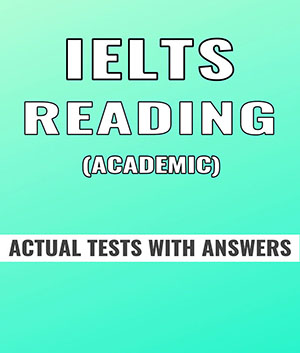
- TOEFL Words
- TOEFL Reading
- TOEFL Writing
- TOEFL Speaking
- TOEFL Listening
TOEFL Reading Practice Online | Q&A 007

The canopy, the upper level of the trees in the rain forest, holds a plethora of climbing mammals of moderately large size, which may include monkeys, cats, civets, and porcupines. Smaller species, including such rodents as mice and small squirrels, are not as prevalent overall in high tropical canopies as they are in most habitats globally. Small mammals, being warm blooded, suffer hardship in the exposed and turbulent environment of the uppermost trees. Because a small body has more surface area per unit of weight than a large one of similar shape, it gains or loses heat more swiftly. Thus, in the trees, where shelter from heat and cold may be scarce and conditions may fluctuate, a small mammal may have trouble maintaining its body temperature. Small size makes it easy to scramble among twigs and branches in the canopy for insects, flowers, or fruit, but small mammals are surpassed, in the competition for food, by large ones that have their own tactics for browsing among food-rich twigs. The weight of a gibbon (a small ape)hanging below a branch arches the terminal leaves down so that fruit-bearing foliage drops toward the gibbon’s face. Walking or leaping species of a similar or even larger size access the outer twigs either by snapping off and retrieving the whole branch or by clutching stiff branches with the feet or tail and plucking food with their hands. Small climbing animals may reach twigs readily, but it is harder for them than for large climbing animals to cross the wide gaps from on tree crown to the next that typify the high canopy.A macaque or gibbon can hurl itself farther than a mouse can: it can achieve a running start, and it can more effectively use a branch as a springboard, even bouncing on a climb several times before jumping. The forward movement of a small animal is seriously reduced by the air friction against the relatively large surface area of its body. Finally, for the many small mammals that supplement their insect diet with fruits or seeds, an inability to span open gaps between tree crowns may be problematic, since trees that yield these foods can be sparse. Questions: 1. The passage answers which of the following questions? (A) How is the rain forest different from other habitats? (B) How does an animal’s body size influence an animal’s need for food? (C) Why does the rain forest provide an unusual variety of food for animals? (D) Why do large animals tend to dominate the upper canopy of the rain forest? 2. Which of the following animals is less common in the upper canopy than in other environments? (A) Monkeys (B) Cats (C) Porcupines (D) Mice 3. The word “they” in line 4 refers to (A) trees (B) climbing mammals of moderately large size (C) smaller species (D) high tropical canopies 4. According to paragraph 2, which of the following is true about the small mammals in the rain forest? (A) They have body shapes that are adapted to live in the canopy. (B) They prefer the temperature and climate of the canopy to that of other environments. (C) They have difficulty with the changing conditions in the canopy. (D) They use the trees of the canopy for shelter from heat and cold. 5. In discussing animal size in paragraph 3, the author indicates that (A) small animals require proportionately more food than larger animals do (B) a large animal’s size is an advantage in obtaining food in the canopy (C) small animals are often attacked by large animals in the rain forest (D) small animals and large animals are equally adept at obtaining food in the canopy 6. The word “typify” in line 19 is closest in meaning to (A) resemble (B) protect (C) characterize (D) divide 7. According to paragraph 4, what makes jumping from one tree crown to another difficult for small mammals? (A)Air friction against the body surface (B) The thickness of the branches (C) The dense leaves of the tree crown (D) The inability to use the front feet as hands 8. The word “supplement” in line 24 is closest in meaning to (A) control (B) replace (C) look for (D) add to 9. Which of the following terms is defined in the passage ? (A) canopy (line 1) (B) warm blooded (line 5) (C) terminal leaves (line 13) (D) springboard (line 21) Answers : DDCCB CADA
- TOEFL Reading Practice Online | Q&A 006
- TOEFL Reading Practice Online | Q&A 008
- TOEFL Reading Practice Online | Q&A 016 2018年2月24日
- TOEFL Reading Practice Online | Q&A 015 2018年2月24日
- TOEFL Reading Practice Online | Q&A 014 2018年2月24日
- TOEFL Reading Practice Online | Q&A 013 2018年2月24日
- TOEFL Reading Practice Online | Q&A 012 2018年2月24日

- Email: [email protected]
- +91-9876543210
- How it Works
IELTS Reading Test 85
Trees in trouble
A Big trees are incredibly important ecologically. For a start, they sustain countless other species. They provide shelter for many animals, and their trunks and branches can become gardens, hung with green ferns, orchids and bromeliads, coated with mosses and draped with vines. With their tall canopies* basking in the sun, they capture vast amounts of energy. This allows them to produce massive crops of fruit, flowers and foliage that sustain much of the animal life in the forest.
B Only a small number of tree species have the genetic capacity to grow really big. The mightiest are native to North America, but big trees grow all over the globe, from the tropics to the boreal forests of the high latitudes. To achieve giant stature, a tree needs three things: the right place to establish its seedling, good growing conditions and lots of time with low adult mortality*. Disrupt any of these, and you can lose your biggest trees.
C In some parts of the world, populations of big trees are dwindling because their seedlings cannot survive or grow. In southern India, for instance, an aggressive non-native shrub, Lantana camara, is invading the floor of many forests. Lantana grows so thickly that young trees often fail to take root. With no young trees to replace them, it is only a matter of time before most of the big trees disappear. Across much of northern Australia, gamba grass from Africa is overrunning native savannah woodlands. The grass grows up to four metres tall and burns fiercely, creating super-hot fires that cause catastrophic tree mortality.
D Without the right growing conditions trees cannot get really big, and there is some evidence to suggest tree growth could slow in a warmer world, particularly in environments that are already warm. Having worked for decades at La Selva Biological Station in Puerto Viejo de Sarapiqui, Costa Rica, David and Deborah Clark and colleagues have shown that tree growth there declines markedly in warmer years. “During the day, their photosynthesis* shuts down when it gets too warm, and at night they consume more energy because their metabolic rate increases, much as a reptile’s would when it gets warmer,” explains David Clark. With less energy produced in warmer years and more being consumed just to survive, there is even less energy available for growth.
E The Clarks’ hypothesis, if correct, means tropical forests would shrink over time. The largest, oldest trees would progressively die off and tend not to be replaced. According to the Clarks, this might trigger a destabilisation of the climate; as older trees die, forests would release some of their stored carbon into the atmosphere, prompting a vicious cycle of further warming, forest shrinkage and carbon emissions.
F Big trees face threats from elsewhere. The most serious is increasing mortality, especially of mature trees. Across much of the planet, forests of slow-growing ancient trees have been cleared for human use. In western North America, most have been replaced by monocultures of fast-growing conifers. Siberia’s forests are being logged at an incredible rate. Logging in tropical forests is selective but the timber cutters usually prioritise the biggest and oldest trees. In the Amazon, my colleagues and I found the mortality rate for the biggest trees had tripled in small patches of rainforest surrounded by pasture land. This happens for two reasons. First, as they grow taller, big trees become thicker and less flexible: when winds blow across the surrounding cleared land, there is nothing to stop their acceleration. When they hit the trees, the impact can snap them in half. Second, rainforest fragments dry out when surrounded by dry, hot pastures and the resulting drought can have devastating consequences: one four-year study has shown that death rates will double for smaller trees but will increase 4.5 times for bigger trees.
G Particular enemies to large trees are insects and disease. Across vast areas of western North America, increasingly mild winters are causing massive outbreaks of bark beetle. These tiny creatures can kill entire forests as they tunnel their way through the inside of trees. In both North America and Europe, fungus-causing diseases such as Dutch elm disease have killed off millions of stately trees that once gave beauty to forests and cities. As a result of human activity, such enemies reach even the remotest corners of the world, threatening to make the ancient giants a thing of the past.
Questions 1-7 Reading Passage 1 has seven paragraphs, A-G. Choose the correct heading for each paragraph from the list of headings below. Write the correct number, i-x, in boxes 1-7 on your answer sheet.
List of Headings i How deforestation harms isolated trees ii How other plants can cause harm iii Which big trees support the most diverse species iv Impact of big tree loss on the wider environment v Measures to prevent further decline in big tree populations vi How wildlife benefits from big trees vii Risk from pests and infection viii Ways in which industry uses big tree products ix How higher temperatures slow the rate of tree growth x Factors that enable trees to grow to significant heights
1. Paragraph A 2. Paragraph B 3. Paragraph C 4. Paragraph D 5. Paragraph E 6. Paragraph F 7. Paragraph G
Questions 8-13 Complete the sentences below. Choose NO MORE THAN TWO WORDS from the passage for each answer.
8 The biggest trees in the world can be found in………………………. 9 Some trees in northern Australia die because of…………………………made worse by gamba grass. 10 The Clarks believe that the release of………………………….from dead trees could lead to the death of more trees. 11 Strong…………………………………are capable of damaging tall trees in the Amazon. 12 …………………………………..has a worse impact on tall trees than smaller ones. 13 In western Northern America, a species of……………………………….has destroyed many trees.
Cambridge IELTS Tests 1 to 17
Whale Strandings
When the last stranded whale of a group eventually dies, the story does not end there. A team of researchers begins to investigate, collecting skin samples for instance, recording anything that could help them answer the crucial question: why? Theories abound, some more convincing than others. In recent years, navy sonar has been accused of causing certain whales to strand. It is known that noise pollution from offshore industry, shipping and sonar can impair underwater communication, but can it really drive whales onto our beaches?
In 1998, researchers at the Pelagos Cetacean Research Institute, a Greek non-profit scientific group, linked whale strandings with low- frequency sonar tests being carried out by the North Atlantic Treaty Organisation (NATO). They recorded the stranding of 12 Cuvier’s beaked whales over 38.2 kilometres of coastline. NATO later admitted it had been testing new sonar technology in the same area at the time as the strandings had occurred. ‘Mass’ whale strandings involve four or more animals. Typically they all wash ashore together, but in mass atypical strandings (such as the one in Greece), the whales don’t strand as a group; they are scattered over a larger area.
For humans, hearing a sudden loud noise might prove frightening, but it does not induce mass fatality. For whales, on the other hand, there is a theory on how sonar can kill. The noise can surprise the animal, causing it to swim too quickly to the surface. The result is decompression sickness, a hazard human divers know all too well. If a diver ascends too quickly from a high-pressure underwater environment to a lower-pressure one, gases dissolved in blood and tissue expand and form bubbles. The bubbles block the flow of blood to vital organs, and can ultimately lead to death.
Plausible as this seems, it is still a theory and based on our more comprehensive knowledge of land-based animals. For this reason, some scientists are wary. Whale expert Karen Evans is one such scientist. Another is Rosemary Gales, a leading expert on whale strandings. She says sonar technology cannot always be blamed for mass strandings. “It’s a case-by-case situation. Whales have been stranding for a very long time – pre-sonar.” And when 80% of all Australian whale strandings occur around Tasmania, Gales and her team must continue in the search for answers.
When animals beach next to each other at the same time, the most common cause has nothing to do with humans at all. “They’re highly social creatures,” says Gales. “When they mass strand – it’s complete panic and chaos. If one of the group strands and sounds the alarm, others will try to swim to its aid, and become stuck themselves.”
Activities such as sonar testing can hint at when a stranding may occur, but if conservationists are to reduce the number of strandings, or improve rescue operations, they need information on where strandings are likely to occur as well. With this in mind, Ralph James, physicist at the University of Western Australia in Perth, thinks he may have discovered why whales turn up only on some beaches. In 1986 he went to Augusta, Western Australia, where more than 100 false killer whales had beached. “I found out from chatting to the locals that whales had been stranding there for decades. So I asked myself, what is it about this beach?” From this question that James pondered over 20 years ago, grew the university’s Whale Stranding Analysis Project.
Data has since revealed that all mass strandings around Australia occur on gently sloping sandy beaches, some with inclines of less than 0.5%. For whale species that depend on an echolocation system to navigate, this kind of beach spells disaster. Usually, as they swim, they make clicking noises, and the resulting sound waves are reflected in an echo and travel back to them. However, these just fade out on shallow beaches, so the whale doesn’t hear an echo and it crashes onto the shore.
But that is not all. Physics, it appears, can help with the when as well as the where. The ocean is full of bubbles. Larger ones rise quickly to the surface and disappear, whilst smaller ones – called microbubbles – can last for days. It is these that absorb whale ‘clicks! “Rough weather generates more bubbles than usual,” James adds. So, during and after a storm, echolocating whales are essentially swimming blind.
Last year was a bad one for strandings in Australia. Can we predict if this – or any other year – will be any better? Some scientists believe we can. They have found trends which could be used to forecast ‘bad years’ for strandings in the future. In 2005, a survey by Klaus Vanselow and Klaus Ricklefs of sperm whale strandings in the North Sea even found a correlation between these and the sunspot cycle, and suggested that changes in the Earth’s magnetic field might be involved. But others are sceptical. “Their study was interesting … but the analyses they used were flawed on a number of levels,” says Evans. In the same year, she co-authored a study on Australian strandings that uncovered a completely different trend. “We analysed data from 1920 to 2002 … and observed a clear periodicity in the number of whales stranded each year that coincides with a major climatic cycle.” To put it more simply, she says, in the years when strong westerly and southerly winds bring cool water rich in nutrients closer to the Australia coast, there is an increase in the number of fish. The whales follow.
So what causes mass strandings? “It’s probably many different components,” says James. And he is probably right. But the point is we now know what many of those components are.
Questions 14-17 Choose NO MORE THAN TWO WORDS from the passage for each answer.
14. What do researchers often take from the bodies of whales? 15. What do some industries and shipping create that is harmful to whales? 16. In which geographical region do most whale strandings in Australia happen? 17. Which kind of whale was the subject of a study in the North Sea?
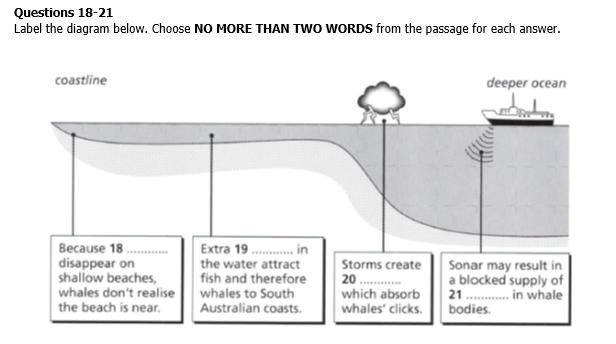
Questions 22-26 Do the following statements agree with the information given in Reading Passage 2? In boxes 22-26 on your answer sheet, write
TRUE if the statement agrees with the information FALSE if the statement contradicts the information NOT GIVEN if there is no information on this
22. The aim of the research by the Pelagos Institute in 1998 was to prove that navy sonar was responsible for whale strandings. 23. The whales stranded in Greece were found at different points along the coast. 24. Rosemary Gales has questioned the research techniques used by the Greek scientists. 25. According to Gales, whales are likely to try to help another whale in trouble. 26. There is now agreement amongst scientists that changes in the Earth’s magnetic fields contribute to whale strandings.
Science in Space
A premier, world-class laboratory in low Earth orbit. That was how the National Aeronautics and Space Administration agency (NASA) sold the International Space Station (ISS) to the US Congress in 2001.Today no one can doubt the agency’s technological ambition. The most complex engineering project ever attempted has created an enormous set of interlinked modules that orbits the planet at more than 27,000 kilometres per hour. It might be travelling fast but, say critics, as a lab it is going nowhere. So far, it has gone through $150 billion.
So where should its future priorities lie? This question was addressed at the recent 1st annual ISS research and development conference in Colorado. Among the presenters was Satoshi Iwase of Aichi Medical University in Japan who has spent several years developing an experiment that could help solve one of the key problems that humans will face in space: keeping our bodies healthy in weightlessness. One thing that physiologists have learned is that without gravity our bodies begin to lose strength, leaving astronauts with weakened bones, muscles and cardiovascular systems. To counter these effects on a long-duration mission to, say, Mars, astronauts will almost certainly need to create their own artificial gravity. This is where Iwase comes in. He leads a team designing a centrifuge for humans. In their preliminary design, an astronaut is strapped into the seat of a machine that resembles an exercise bike. Pedalling provides a workout for the astronaut’s muscles and cardiovascular system, but it also causes the seat to rotate vertically around a central axis so the rider experiences artificial gravity while exercising.
The centrifuge project highlights the station’s potential as a research lab. Similar machines have flown in space aboard NASA’s shuttles, but they couldn’t be tested for long enough to prove whether they were effective. It’s been calculated that to properly assess a centrifuge’s impact on human physiology, astronauts would have to ride it for 30 minutes a day for at least two months. The only way to test this is in weightlessness, and the only time we have to do that is on the space station,’ says Laurence Young, a space medicine expert at the Massachusetts Institute of Technology.
There are certainly plenty of ideas for other experiments: but many projects have yet to fly. Even if the centrifuge project gets the green light, it will have to wait another five years before the station’s crew can take a spin. Lengthy delays like this are one of the key challenges for NASA, according to an April 201 I report from the US National Academy of Sciences. Its authors said they were ‘deeply concerned’ about the state of NASA’s science research, and made a number of recommendations. Besides suggesting that the agency reduces the time between approving experiments and sending them into space, it also recommended setting clearer research priorities.
NASA has already begun to take action, hiring management consultants ProOrbis to develop a plan to cut through the bureaucracy. And Congress also directed NASA to hire an independent organisation, the Centre for the Advancement of Science in Space (CASIS), to help manage the station’s US lab facilities. One of CASIS’s roles is to convince public and private investors that science on the station is worth the spend because judged solely by the number of papers published, the ISS certainly seems poor value: research on the station has generated about 3,100 papers since 1998.The Hubble Space Telescope, meanwhile, has produced more than I 1,300 papers in just over 20 years, yet it cost less than one-tenth of the price of the space station.
Yet Mark Uhran, assistant associate administrator for the ISS, refutes the criticism that the station hasn’t done any useful research. He points to progress made on a salmonella vaccine, for example. To get the ISS research back on track, CASIS has examined more than 100 previous microgravity experiments to identify promising research themes. From this, it has opted to focus on life science and medical research, and recently called for proposals for experiments on muscle wasting, osteoporosis and the immune system. The organisation also maintains that the ISS should be used to develop products with commercial application and to test those that are either close to or already on the market. Investment from outside organisations is vital, says Uhran, and a balance between academic and commercial research will help attract this.
The station needs to attract cutting-edge research, yet many scientists seem to have little idea what goes on aboard it.Jeanne DiFrancesco at ProOrbis conducted more than 200 interviews with people from organisations with potential interests in low gravity studies. Some were aware of the ISS but they didn’t know what’s going on up there, she says. ‘Others know there’s science, but they don’t know what kind.’
According to Alan Stern, planetary scientist, the biggest public relations boost for the ISS may come from the privately funded space flight industry. Companies like SpaceX could help NASA and its partners when it comes to resupplying the ISS, as it suggests it can reduce launch costs by two-thirds. Virgin Atlantic’s Space Ship Two or ZeroUnfinity’s high- altitude balloon could also boost the space station’s fortunes. They might not come close to the ISS’s orbit, yet Stern believes they will revolutionise the way we, the public, see space. Soon everyone will be dreaming of interplanetary travel again, he predicts. More importantly, scientists are already queuing for seats on these low-gravity space-flight services so they can collect data during a few minutes of weightlessness. This demand for low-cost space flight could eventually lead to a service running on a more frequent basis, giving researchers the chance to test their ideas before submitting a proposal for experiments on the ISS. Getting flight experience should help them win a slot on the station, says Stern.
Questions 27-30 Choose the correct letter, A, B, C or D
27. What does the writer state about the ISS in the first paragraph? A Its manufacture has remained within the proposed budget. B It is a great example of technological achievement. C There are doubts about the speed it has attained. D NASA should have described its purpose more accurately.
28. What are we told about Satoshi Iwase’s experimental machine? A It is based on conventional exercise equipment. B It was originally commissioned by NASA. C It is designed only to work in low-gravity environments. D It has benefits that Iwase did not anticipate.
29. The writer refers to the Hubble Space Telescope in order to A show why investment in space technology has decreased. B highlight the need to promote the ISS in a positive way. C explain which kind of projects are more likely to receive funding. D justify the time required for a space project to produce results.
30. In the sixth paragraph, we are told that CASIS has A rejected certain applications for experiments on the ISS. B expressed concern about testing products used for profit. C questioned the benefits of some of the projects currently on the ISS. D invited researchers to suggest certain health-based projects.
Questions 31-35 Look at the following opinions (Questions 31-35) and the list of people below. Match each opinion with the correct person, A, B, C or D. Write the correct letter, A, B, C or D, in boxes 31-35 on your answer sheet. NB You may use any letter more than once.
31. The ISS should be available for business-related ventures. 32. There is general ignorance about what kinds of projects are possible on the ISS. 33. The process of getting accepted projects onto the ISS should be speeded up. 34. Some achievements of the ISS are underrated. 35. To properly assess new space technology, there has to be an absence of gravity.
List of people A Laurence Young B Authors of the US National Academy of Sciences report C Mark Uhran D Jeanne DiFrancesco
Questions 36-39 Complete the summary using the lists of words, A-H, below. Write the correct letter, A-H, in boxes 36-39 on your answer sheet.
The influence of commercial space flight on the ISS According to Alan Stern, private space companies could affect the future of the ISS. He believes they could change its image; firstly because sending food and equipment there would be more (36)…………………………….if a commercial craft were used, and secondly, because commercial flights might make the whole idea of space exploration seem (37)……………………………….to ordinary people. Another point is that as the demand for space flights increases, there is a chance of them becoming more (38)…………………………………. And by working on a commercial flight first, scientists would be more (39)……………………….. if an ISS position came up.
A safe B competitive C flexible D real E rapid F regular G suitable H economical
Question 40 Choose the correct letter, A, B. C or D. Write the correct letter in box 40 on your answer sheet.
40. The writer’s purpose in writing this article is to A promote the advantages of space flight in general. B illustrate how the ISS could become more effective. C criticise the ISS for its narrow-minded attitude. D contrast useful and worthless space projects.
Show Answers
1. vi 2. x 3. ii 4. ix 5. iv 6. i 7. vii 8. north america 9. (super hot) fires 10. (stored) carbon 11. winds 12. drought 13. beetle 14. skin (samples) 15. noise (pollution) 16. (around) Tasmania 17. sperm (whales) 18. sound waves 19. nutients 20. microbubbles 21. blood 22. not given 23. true 24. not given 25. true 26. false 27. B 28. A 29. B 30. D 31. C 32. D 33. B 34. C 35. A 36. H 37. D 38. F 39. G 40. B

- Hotline: 0909.663.115
- DỊCH VÀ GIẢI THÍCH ĐÁP ÁN ĐỀ THI IELTS READING: Researcher on the Tree Crown
- Café Tiếng Anh
- Luyện thi Ielts
- Đề thi Ielts reading 2
Researcher on the Tree Crown giải chi tiết, dịch hoàn thiện, giải thích rõ ràng

DỊCH VÀ GIẢI THÍCH ĐÁP ÁN ĐỀ THI IELTS READING:
Researcher on the tree crown.
The forest canopy – the term given to the aggregated crowns of trees in a forest – is thought to host up to 40 per cent of all species, of which ten per cent could be unique to the forest roof. “We’re dealing with the richest, least known, most threatened habitat on Earth,” says Andrew Mitchell, the executive director of the Global Canopy Programme (GCP), a collection of groups undertaking research into this lofty world. “The problem with our understanding of forests is that nearly all the information we have has been gleaned from just two meters above the soil, and yet we’re dealing with trees that grow to heights of 60 meters, or in the case of the tallest redwood 112 meters. It’s like doctors trying to treat humans by only looking at their feet.”
Tán rừng - cụm từ được đặt cho các tán cây tụ lại trong rừng - được cho là nơi chứa tới 40% tất cả các loài, trong đó 10% có thể là duy nhất đối với vòm rừng. Andrew Mitchell, giám đốc điều hành của Chương trình Tán cây Toàn cầu (GCP), một tập hợp các nhóm thực hiện nghiên cứu về thế giới trên cao này cho biết: “Chúng tôi đang đề cập đến với môi trường sống phong phú nhất, ít được biết đến nhất và bị đe dọa nhiều nhất trên Trái đất. “Vấn đề với sự hiểu biết của chúng ta về rừng là gần như tất cả thông tin chúng ta thu thập được từ nơi chỉ cách mặt đất chỉ hai mét, nhưng chúng ta đang đề cập đến những cây cao tới 60 mét, hoặc trong trường hợp của cây gỗ đỏ cao nhất 112 mét. Nó giống như việc các bác sĩ cố gắng chữa bệnh cho con người bằng cách chỉ nhìn vào đôi chân của họ."
Tropical rainforest comprises the richest of ecosystems, rivalled only by coral reel for its diversity and complex interrelationships. And a great deal of that diversity lives up in the canopy – an estimated 70-90 per cent of life in the rainforest exists in the trees; one in ten of all vascular plants are canopy dwellers, and about 20-25 per cent of all invertebrates are thought to be unique to the canopy.
Rừng mưa nhiệt đới bao gồm hệ sinh thái phong phú nhất, chỉ bị san hô san hô cạnh tranh vì sự đa dạng và mối quan hệ phức tạp của nó. Và phần lớn sự đa dạng đó tồn tại trong tán cây - ước tính khoảng 70-90 phần trăm sự sống trong rừng nhiệt đới tồn tại trên cây; một trong mười số thực vật có mạch là cư dân của tán cây, và khoảng 20-25 phần trăm tất cả các động vật không xương sống được cho là độc nhất trong tán cây.
The first Briton to actually get into the canopy may have been Sir Francis Drake who, in 1573, gained his first glimpse of the Pacific Ocean from a tall tree in Darien, Panama. However, the first serious effort to reach and study the canopy didn’t begin until 1929. The Oxford University Expedition to British Guiana, led by Major RWG Hingston, still ended up with the help of locals when it came to building an observation platform. It was a successful expedition all the same, despite the colony’s acting governor getting stuck high up on a winched seat during a visit. In terms of canopy access, the French have proved themselves to be excellent innovators, taking things further with the development of ‘lighter-than-air platforms -balloons and related equipment, to you and me. Francis Halle from the Laboratoire de Botanique Tropicale at Montpellier University took to a balloon in the mid-1980s in order to approach the canopy from above. His work in French Guiana was inspired by the use in Gabon of a tethered helium balloon by Marcel and Annette Hladick. Halle went on further by using a small purpose-built airship - a cigar-shaped balloon with propellers to aid maneuverability. “We suddenly had a mobile system that could move around the treetops; there were no other means of doing this,” says Mitchell.
Người Anh đầu tiên thực sự bước vào tán cây có thể là Ngài Francis Drake, người vào năm 1573 đã lần đầu tiên nhìn thây Thái Bình Dương từ một cái cây cao ở Darien, Panama. Tuy nhiên, nỗ lực nghiêm túc đầu tiên để tiếp cận và nghiên cứu tán cây đã không bắt đầu cho đến năm 1929. Chuyến thám hiểm của Đại học Oxford đến Guiana thuộc Anh, do Thiếu tá RWG Hingston dẫn đầu, cuối cùng với sự giúp đỡ của người dân địa phương xây dựng một đài quan sát. Dù sao thì đó cũng là một chuyến thám hiểm thành công, mặc dù quyền thống đốc của thuộc địa bị mắc kẹt trên một chiếc ghế có tời trong một chuyến thăm. Về khả năng tiếp cận tán dù, đối với bạn và tôi, người Pháp đã chứng tỏ mình là những nhà đổi mới xuất sắc, tiến xa hơn với sự phát triển của ' bệ phóng nhẹ hơn không khí -khinh khí cầu 'và các thiết bị liên quan. Francis Halle từ Phòng thí nghiệm thực vật nhiệt đới tại Đại học Montpellier đã đi khinh khí cầu vào giữa những năm 1980 để tiếp cận tán cây từ trên cao. Công việc của anh ấy ở Guiana thuộc Pháp được lấy cảm hứng từ việc Marcel và Annette Hladick sử dụng khinh khí cầu helium có dây buộc ở Gabon. Halle đã tiếp tục tiến xa hơn bằng cách sử dụng một khí cầu nhỏ được chế tạo có mục đích - một khinh khí cầu hình điếu xì gà có cánh quạt để hỗ trợ khả năng cơ động. “Chúng tôi đột nhiên có một hệ thống di động có thể di chuyển quanh các ngọn cây; không có cách nào khác để làm việc này,” Mitchell nói.
From this, two balloon-dependent features have developed: the radeau or raft, and the luge or sledge. The raft is a ‘floating’ platform, employed by French academics Dany Cleyet-Marrel and Laurent Pyot and is essentially an island in the treetops. Made of kevlar mesh netting and edged with inflated neoprene tubes, it rests on top of the canopy, allowing sampling (mostly of plants and insects) to take place at the edges of the platform, and can stay in position for several days. The luge, on the other hand, is an inflated hexagon similar to a traditional balloon basket but with a hole in the bottom covered with Kevlar mesh. Such techniques aren’t without their problems, however, “balloons can cover larger areas, especially for collection purposes, but they are extremely expensive- Jibe raft alone cost 122,000 [euro] (86,000 [pounds sterling]) in 2001], but very effective because you can only reach the tops of the trees, and are highly dependent on the weather, ” says Dr Wilfried Morawetz, director of systematic botany at the University of Leipzig. “Balloons can usually only be used in the early morning for two to four hours. Last time, we could only fly three times during the whole week.” Given these factors, it comes as no surprise that operations involving these balloons numbered just six between 1986 and 2001.
Từ đó, hai tính năng phụ thuộc vào khinh khí cầu đã phát triển: radeau hoặc bè, và luge hoặc xe trượt. Chiếc bè là một bệ 'nổi', được sử dụng bởi các học giả người Pháp Dany Cleyet-Marrel và Laurent Pyot và về cơ bản là một hòn đảo trên ngọn cây. Được làm bằng lưới kevlar và viền bằng các ống cao su tổng hợp được bơm phồng, nó nằm trên đỉnh của tán cây, cho phép lấy mẫu (chủ yếu là thực vật và côn trùng) ở các cạnh của bệ và có thể giữ nguyên vị trí trong vài ngày. Mặt khác, luge là một hình lục giác phồng lên tương tự như một chiếc giỏ khinh khí cầu truyền thống nhưng có một lỗ ở đáy được phủ bằng lưới Kevlar. Tuy nhiên, những kỹ thuật như vậy không phải là không có vấn đề, tiến sĩ Wilfried Morawetz, giám đốc hệ thống thực vật học tại Đại học Leipzig, cho biết: “nhưng rất hiệu quả vì bạn chỉ có thể chạm tới ngọn cây và phụ thuộc nhiều vào thời tiết "khinh khí cầu có thể bao phủ các khu vực rộng lớn hơn, đặc biệt là cho mục đích thu thập, nhưng chúng cực kỳ đắt đỏ - chỉ riêng chiếc bè Jibe đã có giá 122.000 [euro] (86.000 [bảng Anh]) vào năm 2001]. “Khinh khí cầu thường chỉ được sử dụng vào sáng sớm trong khoảng thời gian từ hai đến bốn giờ. Lần trước, chúng tôi chỉ có thể bay ba chuyến trong cả tuần." Với những yếu tố này, không có gì ngạc nhiên khi các hoạt động liên quan đến những quả khinh khí cầu này chỉ có sáu con số từ năm 1986 đến 2001.
Smithsonian Tropical Research Institute in Panama, Smith had the idea of using a static crane to get into the treetops. Un-tethered balloons may allow widely distributed sites to be sampled, but cranes allow scientists to study an area of at least a hectare from soil to canopy throughout the year, year after year. “Cranes beat any other access mode. They are cheap, reliable and fast. "In two minutes I can reach any point in our forest, which is essential for comparative measurements across species,” says Professor Christian Korner of the University of Basel. Korner is using a static crane in a unique carbon dioxide-enrichment experiment in Switzerland, in an attempt to discover how forests might respond to the global increase in atmospheric carbon dioxide (see Swiss canopy-crane carbon experiment, right). For reasons of convenience, cranes are generally situated close to cities or a research center. Leipzig University has a crane not far from the town, the Location allowing scientists to study the effect of city pollutants on forests. In order to increase the amount of canopy a crane can access, some have been mounted on short rail tracks. In 1995, Dr Wilfried Morawetz was the first to use this technique, installing a crane on 150 meters of track in the Venezuelan rainforest. “In my opinion, cranes should be the core of canopy research in the future,” he says.
Viện nghiên cứu nhiệt đới Smithsonian ở Panama, Smith nảy ra ý tưởng sử dụng cần cẩu tĩnh để chui vào các ngọn cây. Khinh khí cầu không buộc dây có thể cho phép lấy mẫu các địa điểm phân bố rộng rãi, nhưng cần cẩu cho phép các nhà khoa học nghiên cứu một khu vực có diện tích ít nhất một ha từ đất đến tán cây trong suốt năm này qua năm khác. “Cần cẩu đánh bại bất kỳ chế độ tiếp cận nào khác. Chúng rẻ, đáng tin cậy và nhanh chóng. "Trong hai phút, tôi có thể đến bất kỳ điểm nào trong khu rừng của chúng tôi, điều này rất cần thiết cho các phép đo so sánh giữa các loài,” Giáo sư Christian Korner của Đại học Basel cho biết. Korner đang sử dụng một cần cẩu tĩnh trong một thí nghiệm làm giàu carbon dioxide độc đáo ở Thụy Sĩ, trong nỗ lực khám phá cách các khu rừng có thể phản ứng với sự gia tăng toàn cầu về lượng carbon dioxide trong khí quyển (xem thí nghiệm carbon của cần cẩu tán Thụy Sĩ, bên phải). Vì lý do thuận tiện, cần cẩu thường được đặt gần các thành phố hoặc trung tâm nghiên cứu. Đại học Leipzig có một cần cẩu cách thị trấn không xa, địa điểm cho phép các nhà khoa học nghiên cứu ảnh hưởng của chất ô nhiễm thành phố đối với rừng. Để tăng lượng tán cây mà cần cẩu có thể tiếp cận, một cần cẩu đã được lắp trên đường ray ngắn. Năm 1995, Tiến sĩ Wilfried Morawetz là người đầu tiên sử dụng kỹ thuật này, lắp đặt một cần cẩu trên đường ray dài 150 mét trong rừng nhiệt đới Venezuela. "Theo tôi, cần cẩu nên là cốt lõi của nghiên cứu tán cây trong tương lai," ông nói.

1. Mua bộ đề gần 400 bài ietls reading - Dịch và giải chi tiết Chỉ 199k bao gồm toàn bộ đề trong bộ Cambridge ( từ bộ 1 -18) và nhiều đề thi thực tế ( xem danh sách 400 đề ielts reading tại đây ). Xem bài mẫu tại đây, Bài mẫu 1 , bài mẫu 2 , bài mẫu 3 . Giải đề bao gồm phần dịch bài đọc, dịch phần câu hỏi, giải thích chi tiết. Để mua bộ đề. Vui lòng điền thông tin theo form tại đây và thanh toán theo thông tin CK trong form.
2. Mua bộ đề Ielts listening từ Cam 10-18 - Dịch và giải chi tiết Chỉ 99k bao gồm phần dịch transcript, dịch câu hỏi, giải đề. Xem bài mẫu tại đây . Để mua bộ đề Vui lòng điền thông tin theo form tại đây và thanh toán theo thông tin CK trong form.
3. Đặc biệt dành tặng 100 bạn hoàn thành buổi học thử miễn phí khóa học Ielts Speaking online 1 kèm 1, các bạn sẽ được tặng bộ đề 400k bài Ielts reading và bộ đề Ielts Listening bộ Cam từ 10-18 gồm bài dịch và giải chi tiết, giải thích từ vựng khó ( thời hạn sử dụng trong vòng 2 tháng). Xem thông tin khóa học Ielts Speaking online 1 kèm 1 và đăng ký học thử tại đây.
It appears that the rest of the scientific community has now come around to Mitchell’s way of thinking. “I think most scientists thought him mad to consider such a complex field station at first,” says internationally respected ‘canopist’ Meg Lowman, the executive director of the Marie Selby Botanical Gardens. “However, we’ve all come to realize that a combination of methods, a long-term approach to ecological studies and a collaborative approach are the absolute best ways to advance canopy science. A permanent canopy field station would allow that to happen.” With a dedicated group of canopy scientists working together and a wide range of tools available for them to get into the treetops, we’re now finally on our way towards a true understanding of the least-known terrestrial habitat.
Có vẻ như phần còn lại của cộng đồng khoa học giờ đã thaay đổi cách quan điểm về cách suy nghĩ của Mitchell. Meg Lowman, giám đốc điều hành của Vườn Bách thảo Marie Selby, cho biết: “Tôi nghĩ hầu hết các nhà khoa học đều cho rằng ông ấy thật điên rồ khi xem xét một trạm thực địa phức tạp như vậy lúc đầu. Tuy nhiên, tất cả chúng ta đều nhận ra rằng sự kết hợp của các phương pháp, cách tiếp cận dài hạn đối với nghiên cứu sinh thái và cách tiếp cận hợp tác là những cách tuyệt đối tốt nhất để thúc đẩy khoa học tán cây. Một trạm trên tán cây cố định sẽ cho phép điều đó xảy ra.” Với một nhóm chuyên biệt gồm các nhà khoa học tán cây làm việc cùng nhau và một loạt các công cụ có sẵn để họ đi vào ngọn cây, giờ đây chúng ta cuối cùng cũng đang trên đường hướng tới sự hiểu biết thực sự về môi trường sống trên cạn ít được biết đến nhất.
come around: to change your opinion of something: He’ll come around to my point of view eventually.
>>>> Xem thêm:
♦ Tổng hợp câu trả lời, câu hỏi, từ vựng của hơn 70 chủ đề Ielts Speaking part 1
♦ Tổng hợp gần 400 đề thi Ielts reading ( bao gồm dịch, giải chi tiết, từ vựng)
Questions 14-18
The reading Passage has seven paragraphs A-F
Which paragraph contains the following information?
Write the correct letter A-F , in boxes 14-18 on your answer sheet
14 The Scientific significance for committing canopy study.
15 The first academic research attempt mentioned to getting the top canopy.
16 The overview idea of the forest canopy and the problem of understanding the forests.
17 Recognition for a long term effect and cooperation.
18 An innovation accessing to treetop which proved to be an ultimate solution till now.
Questions 19-22
Complete the following summary of the paragraphs of Reading Passage
Using NO MORE THAN TWO WORDS from the Reading Passage for each answer.
Write your answers in boxes 19-22 on your answer sheet.
Scientists keep trying new methods to access to the canopy of the treetop. Though early attempt succeeded in building an observation platform yet the help from the 19 …………………….. was imperative; further innovators made by the French who built a platform with equipment by using 20 …………………… Later, the ‘floating’ platform of 21 ………………………. is serving as an island in the treetops. Then finally, there came the next major breakthrough in Panama. Scientists applied 22 ……………………… to access to the treetops, which are proved to be the center of canopy research in today and in the future.
Questions 23- 27
Use the information in the passage to match the category (listed A-F ) with opinions or deeds below.
Write the appropriate letters A-F in boxes 23-27 on your answer sheet.
NB You may use any letter more than once
A Sir Francis Drake
B Wilfried Morawetz
C Dany Cleyet-Marrel
D Francis Halle
E Christian Korner
F Alan Smith
23 Scientist whose work was inspired by the method used by other researchers.
24 Scientist who made a claim that a balloon could only be used in a limited frequency or time.
25 Scientist who initiated a successful access mode which is cheap and stable.
26 Scientist who had committed canopy-crane experiment for a specific scientific project.
27 Scientist who initiated the use of crane on the short rail tracks.
.jpg)
ĐÁP ÁN
20. balloons
21. raft/rafts
22. (static) crane/ cranes
KẾT NỐI VỚI CHÚNG TÔI
Bài viết liên quan, dịch và giải thích đáp án đề thi ielts reading: making copier.

DỊCH VÀ GIẢI THÍCH ĐÁP ÁN ĐỀ THI IELTS READING: Movie of Metropolis

DỊCH VÀ GIẢI THÍCH ĐÁP ÁN ĐỀ THI IELTS READING: Coral reefs

DỊCH VÀ GIẢI THÍCH ĐÁP ÁN ĐỀ THI IELTS READING: Decision making and Happiness

- About IELTS

- What is IELTS Listening Test?
- Listening Tips & Tricks
- Listening Mini Tests
- Listening Practice Tests
- What is IELTS Reading Test?
- Reading Tips & Tricks
- Reading Mini Tests
- Reading Practice Tests
- What is IELTS Writing Test?
- Writing Tips & Tricks
- Writing Mini Tests
- Writing Practice Tests
- What is IELTS Speaking Test?
- Speaking Tips & Tricks
- Speaking Mini Tests
- Speaking Practice Tests
- Academic Module
- General Training Module
- Listening Section
- Reading Section
- Writing Section
- Speaking Section
IELTS Reading (Passage 2) - Actual Exam in Hong Kong on 11th September 2021
READING PASSAGE 2
You should spend about 20 minutes on Questions 14-27 , which are based on Reading Passage 2 below.
Researcher on the Tree Crown
A. The forest canopy – the term given to the aggregated crowns of trees in a forest – is thought to host up to 40 percent of all species, of which ten percent could be unique to the forest roof. “We’re dealing with the richest, least known, most threatened habitat on Earth,” says Andrew Mitchell, the executive director of the Global Canopy Programme (GCP), a collection of groups undertaking research into this lofty world. [ Crack IELTS with Rob ] “The problem with our understanding of forests is that nearly all the information we have has been gleaned from just two meters above the soil, and yet we’re dealing with trees that grow to heights of 60 meters, or in the case of the tallest redwood 112 meters. It’s like doctors trying to treat humans by only looking at their feet.”
B. Tropical rainforest comprises the richest of ecosystems, rivaled only by coral reel for its diversity and complex interrelationships. And a great deal of that diversity lives up in the canopy – an estimated 70-90 percent of life in the rainforest exists in the trees; one in ten of all vascular plants are canopy dwellers, and about 20-25 percent of all invertebrates are thought to be unique to the canopy.
C. The first Briton to actually get into the canopy may have been Sir Francis Drake who, in 1573, gained his first glimpse of the Pacific Ocean from a tall tree in Darien, Panama. However, the first serious effort to reach and study the canopy didn’t begin until 1929. [ Crack IELTS with Rob ] The Oxford University Expedition to British Guiana, led by Major RWG Hingston, still ended up help of locals when it came to building an observation platform. It was a successful expedition all the same, despite the colony’s acting governor getting stuck high up on a winched seat during a visit. In terms of canopy access, the French have proved themselves to be excellent innovators, taking things further with the development of ‘lighter-than-air platforms -balloons and related equipment, to you and me. Francis Halle; from the Laboratoire de Botanique Tropicale at Montpellier University took to a balloon in the mid-1980s in order to approach the canopy from above. His work in French Guiana was inspired by the use in Gabon of a tethered helium balloon by Marcel and Annette Hladick. Halle went one further by using a small purpose-built airship-a cigar-shaped balloon with propellers to aid maneuvrability. “We suddenly had a mobile system that could move around the treetops; there were no other means of doing this,” says Mitchell.
D. From this, two balloon-dependent features have developed: the radeau or raft, and the luge or sledge. The raft is a ‘floating’ platform, employed by French academics Dany Cleyet-Marrel and Laurent Pyot and is essentially an island in the treetops. Made of kevlar mesh netting and edged with inflated neoprene tubes, it rests on top of the canopy, allowing sampling (mostly of plants and insects) to take place at the edges of the platform, and can stay in position for several days. [ Crack IELTS with Rob ] The luge, on the other hand, is an inflated hexagon similar to a traditional balloon basket but with a hole in the bottom covered with Kevlar mesh. Such techniques aren’t without their problems, however, “balloons can cover larger areas, especially for collection purposes, but they are extremely expensive- Jibe raft alone cost 122,000 [euro] (86,000 [pounds sterling]) in 2001], nut very effective because you can only reach the tops of the trees, and are highly dependent on the weather, ” says Dr Wilfried Morawetz, director of systematic botany at the University of Leipzig. “Balloons can usually only be used in the early morning for two to four hours. Last time, we could only fly three times during the whole week.” Given these factors, it comes as no surprise that operations involving these balloons numbered just six between 1986 and 2001.
E. Smithsonian Tropical Research Institute in Panama. Smith had the idea of using a static crane to get into the treetops. Un-tethered balloons may allow widely distributed sites to be sampled, but cranes allow scientists to study an area of at least a hectare from soil to canopy throughout the year, year after year. “Cranes beat any other access mode. They are cheap, reliable and fast. In two minutes I can reach any point in our forest, which is essential for comparative measurements across species,” says Professor Christian Korner of the University of Basel. [ Crack IELTS with Rob ] Korner is using a static crane in a unique carbon dioxide-enrichment experiment in Switzerland, in an attempt to discover how forests might respond to the global increase in atmospheric carbon dioxide (see Swiss canopy-crane carbon experiment, right). For reasons of convenience, cranes are generally situated close to cities or a research center. Leipzig University has a crane not far from the town, the Location allowing scientists to study the effect of city pollutants on forests. In order to increase the amount of canopy a crane can access, some have been mounted on short rail tracks. In “1995, Dr Wilfried Morawetz was the first to use this technique, installing a crane on 150 meters of track in the Venezuelan rainforest. “In my opinion, cranes should be the core of canopy research in the future,” he says.
F. It appears that the rest of the scientific community has now come around to Mitchell’s way of thinking. “I think most scientists thought him mad to consider such a complex field station at first,” says internationally respected ‘canopist’ Meg Lowman, the executive director of the Marie Selby Botanical Gardens. “However, we’ve all come to realize that a combination of methods, a long-term approach to ecological studies and a collaborative approach are the absolute best ways to advance canopy science. [ Crack IELTS with Rob ] A permanent canopy field station would allow that to happen.” With A dedicated group of canopy scientists working together and a wide range of tools available for them to get into the treetops, we’re now finally on our way towards a true understanding of the least-known terrestrial habitat.
Questions 14 - 18
Reading Passage 2 has six paragraphs A-F .
Which paragraph contains the following information?
Write the correct letter, A-F , in boxes 14-18 on your answer sheet.
14 . A B C D E F The Scientific significance for committing canopy study.
15 . A B C D E F The first academic research attempt mentioned to getting the top canopy.
16 . A B C D E F The overview idea of the forest canopy and the problem of understanding the forests.
17 . A B C D E F Recognition for a long-term effect and cooperation.
18 . A B C D E F An innovation accessing to treetop which proved to be an ultimate solution till now.
Questions 19 - 22
Complete the summary below.
Choose NO MORE THAN TWO WORDS from the passage for each answer.
Write your answers in boxes 19-22 on your answer sheet.
Questions 23 - 27
Use the information in the passage to match the category (listed A-F ) with opinions or deeds below.
Write the appropriate letters, A-F , in boxes 23-27 on your answer sheet.
NB You may use any letter more than once.
List of names
A Sir Francis Drake
B Wilfried Morawetz
C Dany Cleyet-Marrel
D Francis Halle
E Christian Korner
F Alan Smith
23 . A B C D E F Scientist whose work was inspired by the method used by other researchers.
24 . A B C D E F Scientist who made a claim that a balloon could only be used in a limited frequency or time.
25 . A B C D E F Scientist who initiated a successful access mode which is cheap and stable.
26 . A B C D E F Scientist who had committed canopy-crane experiment for a specific scientific project.
27 . A B C D E F Scientist who initiated the use of cranes on the short rail tracks.
Please click the red words below for other Sections in this Mock Test:

Related post
.png)

IELTS Reading Actual Exam on 03 June 2023
.png)
IELTS Reading Actual Exam on 10 September 2022
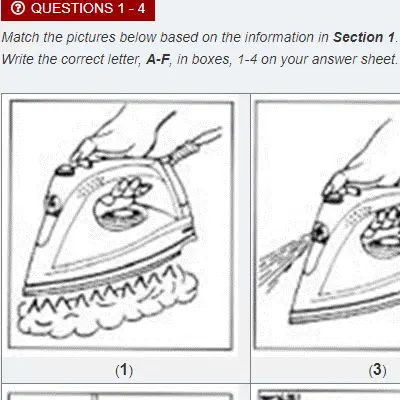
General Reading 10.1
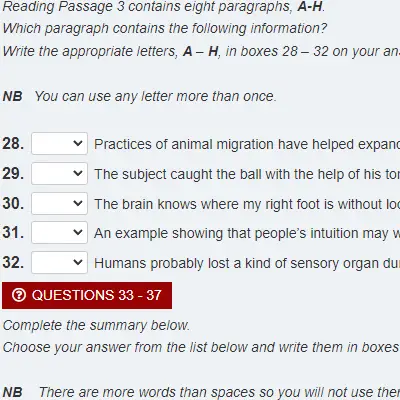
IELTS Reading Forecast 2022 #Test3
- Add Highlight
Guide to do the test x

Kết quả bài làm

IELTS Academic Reading
Practice IELTS Academic Reading with answers and explanation. IELTS Academic Reading Practice Passages.

Makkar IELTS Reading Volume 3 Academic PDF Download
Latest Makkar IELTS Reading Volume 3 Academic PDF Free Download. Makkar Academic Reading Volume 3 contains 20 IELTS reading tests.
Makkar IELTS Reading Volume 3 Academic PDF Download Read More »

The Pursuit of Happiness IELTS Reading Passage
Practice The Pursuit of Happiness IELTS Reading Passage with Answers. How Happy Are We? Match The Information, Summary Completion, MCQ
The Pursuit of Happiness IELTS Reading Passage Read More »

Going Bananas IELTS Reading Passage with Answers
Practice Going Bananas IELTS Reading Passage with Answers. Match The Information Fillups True False Not Given IELTS Reading Going Bananas
Going Bananas IELTS Reading Passage with Answers Read More »

The Rise of Antibiotic Resistant Infections IELTS Reading
Practice The Rise of Antibiotic Resistant Infections IELTS Reading Answers. Match The Information The Rise of Antibiotic IELTS Reading Passage.
The Rise of Antibiotic Resistant Infections IELTS Reading Read More »

Making Copier IELTS Reading Passage
Practice Making Copier IELTS Reading Answers. The earliest languages were recorded on papyrus. Fill-ups, True/False/Not Given IELTS Reading.
Making Copier IELTS Reading Passage Read More »
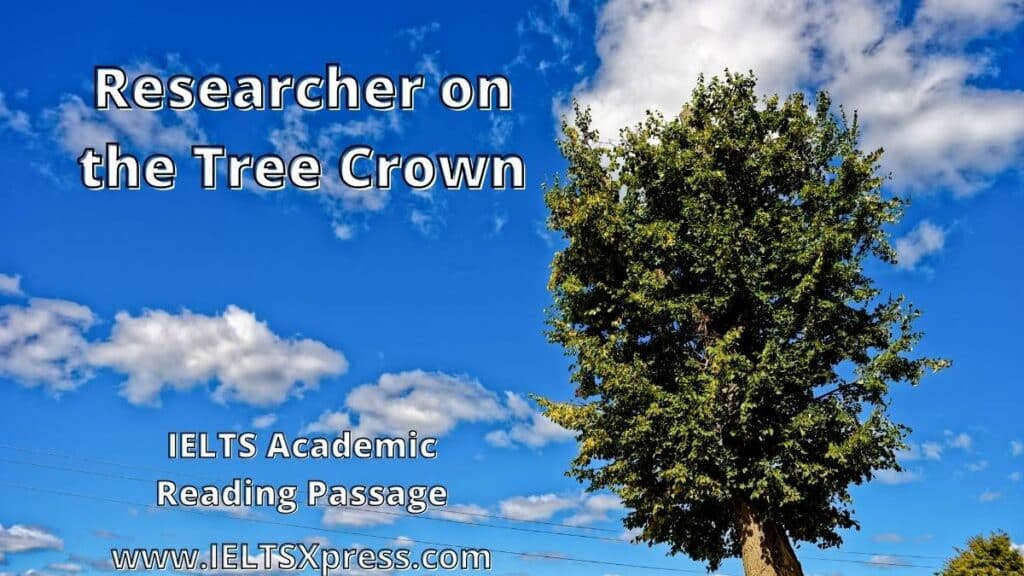
Researcher on the Tree Crown IELTS Reading Passage
Practice Researcher on the Tree Crown IELTS Reading Answers. Treetop research IELTS Reading Match The Information, Fill-ups reading practice.
Researcher on the Tree Crown IELTS Reading Passage Read More »
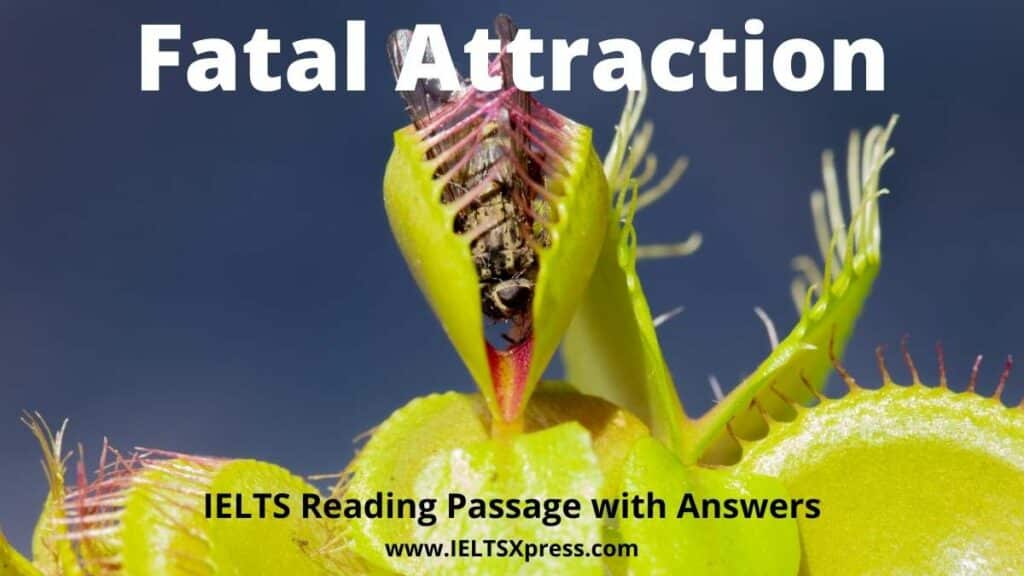
Fatal Attraction IELTS Reading Passage with Answers
Practice Fatal Attraction IELTS Reading Answers. Fill-ups, Match The Information, How a Venus flytrap traps an insect IELTS Reading Passage.
Fatal Attraction IELTS Reading Passage with Answers Read More »

The Adolescents IELTS Reading Passage
Practice The Adolescents IELTS Reading Passage Answers. Development of Adolescence IELTS Reading. Match the Information, True/False/NG.
The Adolescents IELTS Reading Passage Read More »

The Extinct Grass in Britain IELTS Reading Passage
Practice The Extinct Grass in Britain IELTS Reading Answers. Reading Coming back to the extinct grass in britain. True/False/NG, Match Author.
The Extinct Grass in Britain IELTS Reading Passage Read More »

The Columbian Exchange IELTS Reading Passage
Practice The Columbian Exchange IELTS Reading. The Columbian Exchange Academic Reading Fill-ups, True/False/Not Given, Match the Info.
The Columbian Exchange IELTS Reading Passage Read More »

Doctors Rights and Drinks IELTS Reading Passage
Practice Doctors Rights and Drinks IELTS Reading. Doctor’s Rights and Drinks Academic Reading Fill-ups, True/False/Not Given, MCQs.
Doctors Rights and Drinks IELTS Reading Passage Read More »

Inside the mind of a fan IELTS Reading Passage
Practice Inside The Mind of a Fan IELTS Reading. How watching sport affects a brain ielts reading. Match the Information, Yes/No/Not given, MCQs.
Inside the mind of a fan IELTS Reading Passage Read More »

IELTS Practice Cambridge 9 Reading Test 3
Prepare for your IELTS reading module with Cambridge 9 Reading Test 3. Enhance your comprehension skills through real exam questions.
IELTS Practice Cambridge 9 Reading Test 3 Read More »

IELTS Practice Cambridge 7 Academic Reading Test 1
IELTS Practice Cambridge 7 Academic Reading Test 1. Let’s Go Bats | Making Every Drop Count | Educating Psyche IELTS Reading Answers.
IELTS Practice Cambridge 7 Academic Reading Test 1 Read More »

Practice Cambridge IELTS 8 Academic Reading Test 1
Practice Cambridge IELTS 8 Academic Reading Test 1 with Answers. A Chronicle of Timekeeping, AIR TRAFFIC CONTROL IN THE USA, Telepathy IELTS Reading
Practice Cambridge IELTS 8 Academic Reading Test 1 Read More »
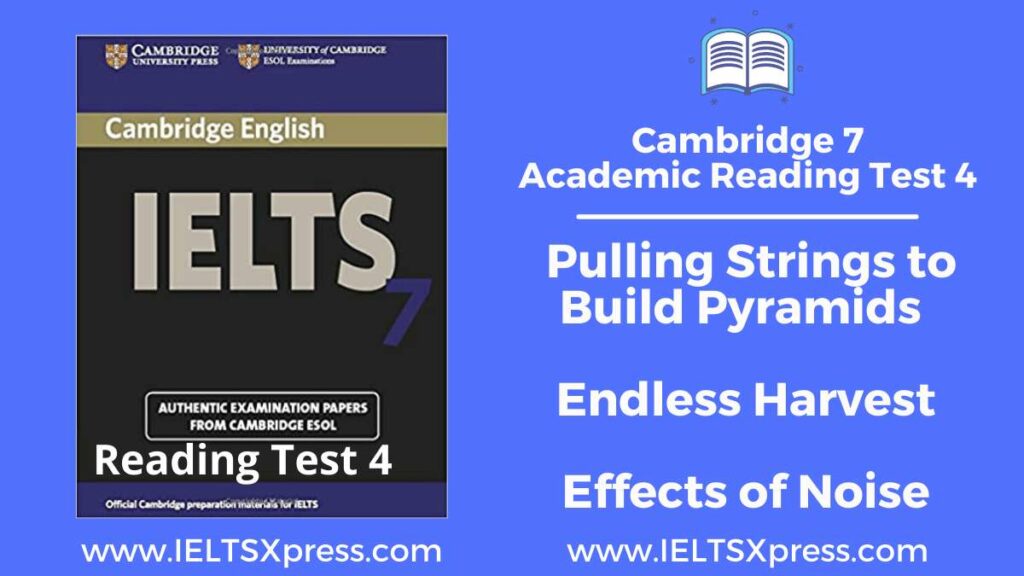
Practice IELTS Cambridge 7 Academic Reading Test 4
Practice IELTS Cambridge 7 Academic Reading Test 4. Pulling Strings to Build Pyramids | Endless Harvest | Effects of Noise
Practice IELTS Cambridge 7 Academic Reading Test 4 Read More »
Start typing and press enter to search

首页 0元试听课 雅思分数测试 雅思选课中心

企业微信|咨询助教回复【新题】

扫码添加助教免费咨询雅思备考规划

扫码关注回复 雅思 获取最新雅思口语题库和备考资料
雅思阅读练习题:Researcher on the Tree Crown
¥1999 新东方内部资料
- 【考试动态】 2019年雅思考试时间表 2019雅思考试报名入口 雅思口语考试安排 成绩查询 雅思报考流程
- 【备考指导】 2019雅思考试题型介绍 2019雅思考试评分标准 雅思机考须知 2019雅思考试转考退考须知
新东方在线雅思网 第一时给大家带来了 雅思阅读 练习题:Researcher on the Tree Crown。希望以下内容能够为同学们的雅思备考提供帮助。新东方在线雅思网将第一时间为大家发布最新、最全、最专业的 雅思报名官网 消息和 雅思考试真题 及解析,供大家参考。
Researcher on the Tree Crown(树冠研究)
You should spend about 20 minutes on Question 14-26 which are based on Reading Passage below.
AThe forest canopy-the term given to the aggregated crowns of trees in a forest-is thought to host up to 40 per cent of all species, of which ten per cent could be unique to the forest roof. "We're dealing with the richest, least known, most threatened habitat on Earth," says Andrew Mitchell, the executive director of the Global Canopy Programme/ a collection of groups undertaking research into this lofty world. "The problem with our understanding of forests is that nearly all the information we have has been gleaned from just two meters above the soil, and yet we're dealing with trees that grow to heights of 60 meters, or in the case of the tallest redwood 112 meters. It's like doctors trying to treat humans by only looking at their feet."
BTropical rainforest comprises the richest of ecosystems, rivalled only by coral reel for its diversity and complex interrelationships. And a great deal of that diversity lives up in the canopy-an estimated 70-90 per cent of life in the rainforest exists in the trees; one in ten of all vascular plants are canopy dwellers; and about 20-25 per cent of all invertebrates are thought to be unique to the canopy.
CThe first Briton to actually get into the canopy may have been Sir Francis Drake who, in 1573, gained his first glimpse of the Pacific Ocean from a tall tree in Darien, Panama. However, the first serious effort to reach and study the canopy didn't begin until 1929. The Oxford University Expedition to British Guiana, led by Major RWG Hingston, still ended up help of locals when it came to building an observation platform. It was a successful expedition all the same, despite the colony's acting governor getting stuck high up on a winched seat during a visit. In terms of canopy access, the French have proved themselves to be excellent innovators, taking things further with the development of 'lighter-than-air platforms -balloons and related equipment, to you and me. Francis Halle; from the Laboratoire de Botanique Tropicale at Montpellier University took to a balloon in the mid-1980s in order to approach the canopy from above. His work in French Guiana was inspired by the use in Gabon of a tethered helium balloon by Marcel and Annette Hladick. Halle went one further by using a small purpose-built airship-a cigar-shaped balloon with propellers to aid manoeuvrability. "We suddenly had a mobile system that could move around the treetops; there was no other means of doing this," says Mitchell.
DFrom this, two balloon-dependent features have developed: the radeau or raft, and the luge or sledge. The raft is a 'floating' platform, employed by French academics Dany Cleyet-Marrel and Laurent Pyot and is essentially an island in the treetops. Made of kevlar mesh netting and edged with inflated neoprene tubes, it rests on top of the canopy, allowing sampling (mostly of plants and insects) to take place at the edges of the platform, and can stay in position for several days. The luge, on the other hand, is an inflated hexagon similar to a traditional balloon basket but with a hole in the bottom covered with Kevlar mesh. Such techniques aren't without their problems, however, "balloons can cover larger areas, especially for collection purposes, but they are extremely expensive- Jibe raft alone cost 122,000 [euro] (86,000 [pounds sterling]) in 2001], nut very effective because you can only reach the tops of the trees, and are highly dependent on the weather, " says Dr Wilfried Morawetz, director of systematic botany at the University of Leipzig. “Balloons can usually only be used in the early morning for two to four hours. Last time, we could only fly three times during a whole week." Given these factors, it comes as no surprise that operations involving these balloons numbered just six between 1986 and 2001.
ESmithsonian Tropical Research Institute in Panama. Smith had the idea of using a static crane to get into the treetops. Un-tethered balloons may allow widely distributed sites to be sampled, but cranes allow scientists to study an area of at least a hectare from soil to canopy throughout the year, year after year. "Cranes beat any other access mode. They are cheap, reliable and fast. In two minutes I can reach any point in our forest, which is essential for comparative measurements across species," says Professor Christian Korner of the University of Basel. Korner is using a static crane in a unique carbon dioxide-enrichment experiment in Switzerland, in an attempt to discover how forests might respond to the global increase in atmospheric carbon dioxide (see Swiss canopy-crane carbon experiment, right). For reasons of convenience, cranes are generally situated close to cities or a research center. Leipzig University has a crane not far from the town, the Location allowing scientists to study the effect of city pollutants on forests. In order to increase the amount of canopy a crane can access, some have been mounted on short rail tracks. In "1995, Dr Wilfried Morawetz was the first to use this technique, installing a crane on 150 meters of track in Venezuelan rainforest. “In my opinion, cranes should be the core of canopy research in the future," he says.
FIt appears that the rest of the scientific community has now come around to Mitchell's way of thinking. "I think most scientists thought him mad to consider such a complex field station at first," says internationally respected 'canopist' Meg Lowman, the executive director of the Marie Selby Botanical Gardens. "However, we've all come to realize that a combination of methods, a long-term approach to ecological studies and a collaborative approach are the absolute best ways to advance canopy science. A permanent canopy field station would allow that to happen." With A dedicated group of canopy scientists working together and a wide range of tools available for them to get into the treetops, we're now finally on our way towards a true understanding of the least-known terrestrial habitat.
Questions 14-18
The reading Passage has seven paragraphs A-F
Which paragraph contains the following information?
Write the correct letter A-F, in boxes 14-18 on your answer sheet
14. The Scientific significance for committing canopy study.
15. The first academic research attempt mentioned to get to the top canopy.
16. The overview idea of forest canopy and the problem of understanding the forests.
17. A recognition for a long term effect and cooperation.
18. An innovation accessing to treetop which proved to be an ultimate solution till now.
Questions 19-22
Complete the following summary of the paragraphs of Reading Passage, using No More than Two words from the Reading Passage for each answer. Write your answers in boxes 19-22 on your answer sheet.
Scientists keep trying new methods to access to the canopy of the treetop. Though early attempt succeeded in building an observation platform yet the help from the 19 was imperative; further innovators made by the French who built a platform with equipment by using 20 . Later, the ‘floating’ platform of 21 is serving as an island in the treetops. Then finally, there came the next major breakthrough in Panama. Scientists applied 22 to access to the treetops, which are proved to be the center of canopy research in today and in the future.
Questions 23- 27
Use the information in the passage to match the category (listed A-F) with opinions or deeds below. Write the appropriate letters A-F in boxes 23-27 on your answer sheet.
NB you may use any letter more than once
A. Sir Francis Drake
B. Wilfried Morawetz
C. Dany Cleyet-Marrel
D. Francis Halle
E. Christian Korner
F. Alan Smith
23. Scientist whose work was inspired by the method used by other researchers.
24. Scientist who made a claim that balloon could only be used in a limited frequency or time.
25. Scientist who initiated a successful access mode which is cheap and stable.
26. Scientist who had committed canopy-crane experiment for a specific scientific project.
27. Scientist who initiated the use of crane on the short rail tracks.
森林树冠层是用来描述森林中所有树冠总和的术语,是超过40%生物物种的栖息地,其中10%的物种是只生活在树冠上的。Global Canopy Programme是专门研究树冠的组织,它的执行主席Andrew Mitchell说道:“我们正在研究地球上最丰富,最鲜为人知但是 又最受威胁的栖息地。我们对森林认识的问题在于几乎所有我们收集的信息只是从距离地面2米的地方获得的,但是我们却要以此研究关于距离地面60米髙的树,或是最高达112米的红木这样的树木的问题。这就好比医生只能通过看病人的脚来治愈病人。”
热带雨林包含最丰富的生态系统,从生物多样性和生物之间关系的复杂性上来讲,只有珊瑚礁可以与之媲美。而其中大部分的多样性的生物都居住在树冠上,据估计雨林中70%-90%的生物居住在树上,有十分之一的导管植物是生长在树冠层,大约20%-25%的无脊椎动物只生活在树冠层。
第一个真正意义上进入树冠层进行研究的英国人是Sir Francis Drake,他在1573年在巴拿马的Darien的一刻高树第一次看到了太平洋。但是第一个真正意义上的关于树冠的研究指导1929年才开始。Major RWG Hingston领导的牛津大学科考队赴英属圭亚那进行考察,最终在需要建造一个观察平台时,他们还是向当地人进行了求助。这次科考总的来说还是很成功的,尽管代理领导者在坐着轿子参观的过程中被卡到悬在空中。就到达树冠这个层面而吉,法国人可以说是优秀的创新者,他们通过比空气还轻的平台也就是气球和相关的设备来运送东西。来自Montpellier大学热带植物研究所的Francis Halle在1980年代中期通过一个气球从空中到达树冠。他在法属圭亚那的工作收了Marcel和Annette Hladic在加蓬共和国氦气球的启发。Halle更近一部,他乘坐了专门建造的一个小型的飞行器——长得像雪茄形状的气球,是靠螺旋桨来增加机动性的。Mitchell说道:“我们突然有了一个可移动的系统来在树梢附近活动,除此别无他法。”
自此以后,两个以来气球的工具就产生了:筏子或是雪橇,筏子是“漂浮着的平台”,被法国学者Danny Cleyet—Marrel和Laurent Pyot应用在树顶的一个小岛上,是用橡胶渔网边缘配上充气的氯丁橡胶管子做成的。这个小筏子停留在树冠层的顶部,这样可以让生物抽样(主要是植物和昆虫)可以在平台的边缘停留数日。在另一方面,雪橇呈充气六边形,和传统的气球篮子相似,在底部的中间有一个洞,上面覆盖着橡胶网,当然这种技术不是完美的。莱比锡大学系统植物研究所主任Dr Wilfried Morawets说道:“气球可以覆盖更大的区域,尤其是手机信息的时候,但是它们的造价非常高,Jibe筏子造价122,000欧元(约合86000英镑,按2001年的汇率)虽然这种方式很有效,但是只能是研究人员到达顶部并且对天气的依赖性很强。气球只能在淸早使用2-4小时,上周整整一周因为天气原因我们只能出去考察3次。”鉴于以上因素,就不难理解为什么在1986年和2001年间只存六次研究活动采用气球。
接下来另一个重要的创新来自巴拿马Smithsonian Tropical Research Institute的Alan Smith,他是采用一个静止的起重机来到达树冠。没有绳子拴着的气球能够大范围地采集样本,但是起重机可以让科学家年复一年地通年集中研究一公顷的范围内从土壤到树冠。Basel大学的教授Christian Korner认为“起重机比其他任何一种方法都要好,它们好,它们又便宜有可靠而且快速。我可以在两分钟之内到达想要到达的森林的任何位置,这对于物种间的比较研究至关重要。” Christian Korner在瑞士用充满二氧化碳的空气中用起重机进行一个实验。试图揭开森林将如何应对全球二氧化碳含量上升。为了简便起见,起重机一般都安置在靠近城市或是研究中心,莱比锡大学在离城镇不远的地方就有一个研究用的起重机,该地点可以让研究者对污染物对森林的影响进行研究。为了增加起重机能到达的树冠的数量,一些起重机放在短的铁轨上。在1995年,Dr Wilfried Morawets是第一个采用这样技术的人,在Venezuelan雨林假期了150米的轨道。他说道:“在我看来,起重机将是未来研究树冠的核心工具。”
似乎进行树冠研究的其他人和Mitchell的观点一样,被组委“树冠学家”的Madie Selby Botanical Gardens的执行主任Meg Lowan说道:“期初许多科学家肯定认为Mitchell疯了才会想到建这样一个复杂的实地观察站。但是我们逐渐都点识到,将不同方法进行组合,从而能够用长期合作的方法来进行生态研究是推进树冠研究最好的方法。一个永久的树冠研究站能够做到这一点。”一群致力于研究树冠的科学家通力合作,运用一系列的工具到达树顶,从而可以真正了解最不为人知的陆地柄息地—树冠。”

本文关键字: 雅思阅读
活动时间:12月29日19:50-21:00

雅思88折 好课不停学
新东方名师直播教你解题技能,助你备战雅思!
活动时间:4月16至4月23日

新东方雅思5月公开讲座
新东方教师直播教你全科技巧!

剑桥雅思正版题目机考实战!

【知心雅思】全科提高冲 7分班
适合人群:想要冲7分的考生

【知心雅思】6分录播课 (A类)
适合人群:想要冲6分的考生

【知心雅思】6.5分录播课 (A类)
适合人群:想要冲6.5分的考生

【知心雅思】7分录播课 (A类)

免费获取雅思备考资料包

雅思写作高频词汇PDF下载
添加新东方在线雅思助教号
590组雅思阅读写作必背短语PDF版下载
雅思学术词汇搭配表PDF版下载
雅思口语part3结构策略PDF版下载
回复【Part3】获取
雅思听力高频场景词PDF版下载
雅思口语Part2答案示范15篇PDF下载
雅思小作文35组必备表达PDF下载
雅思阅读高频短语PDF下载
200组雅思写作高频词汇PDF下载
雅思写作话题词汇PDF下载
50组雅思口语同义替换词PDF下载
雅思写作大作文精选题目101PDF下载
雅思口语核心300词PDF下载
雅思阅读分类词汇PDF下载
雅思口语必备习语PDF下载
雅思小作文常用词汇66词PDF下载
雅思口语常见功能结构109句PDF下载
10年雅思写作题库PDF下载
雅思图表作文精选套句50句PDF下载
雅思写作99组高频词汇PDF资料
2023年5月雅思口语新题题库PDF版本
2023年5-8月雅思口语新题题库与解析PDF版本
关注新东方在线考雅课程中心服务号
雅思听力考点词汇PDF资料
雅思听力机经词汇PDF资料
雅思口语Part1常见话题语料库PDF资料
回复【Part1】获取
剑桥雅思阅读长难句50句PDF资料
雅思阅读核心学术词汇表PDF资料
100个雅思写作观点词和替换词表达PDF资料
雅思阅读分类词汇PDF资料
雅思阅读短语PDF资料

添加新东方在线雅思助教, 回复【口语】获取雅思口语资料大礼包

- 1.打开手机微信【扫一扫】,识别上方二维码;
- 2.添加助教,回复上方关键字领取学习资料。

很多考鸭在备考过程中会想去寻找一些原文资料,想要轻松有效地提升自己的雅思水平,这是非常不错的做法! 本文主要为大家介绍实用的英文书籍,希望对大家的雅思备考有所帮助。
来源 : 网络综合整理 2023-12-06 22:26:00 关键字 : 雅思备考 英文书 英文原籍
来源 : 网络综合整理 2023-12-06 22:23:00 关键字 : 雅思备考 英文书 英文原籍
来源 : 网络综合整理 2023-12-06 22:06:00 关键字 : 雅思备考 英文书 英文原籍
来源 : 网络综合整理 2023-12-06 21:36:00 关键字 : 雅思备考 英文书 英文原籍
来源 : 网络综合整理 2023-12-06 21:27:00 关键字 : 雅思备考 英文书 英文原籍
- 24年1-4月雅思口语题库
- 1-4月雅思口语题库下载
- 2024年雅思口语题库汇总
- 2024雅思考试时间表
- 剑雅阅读同义替换词汇总
- 2024年雅思机经汇总
- 剑桥雅思14真题及答案
- 剑桥雅思13真题及答案
- 2024QS世界大学排名
- 2024THE世界大学排名
- 2023软科世界大学排名
- 攀枝花雅思培训班多少钱
- 呼和浩特雅思培训班多少钱
- 公主岭雅思培训班多少钱

2024年5月-8月雅思口语题库

新东方教师直播教你雅思知识点!
限报人数:40000人
雅思听力|阅读|写作|口语在线练习
听力|阅读|写作|口语在线做题,更好的备战考试!

2024年雅思考试题回忆
微信添加助教 回复【考试题回忆】.

- 【重磅】2023QS亚洲地区大学排名发布!
- 雅思听力场景词汇分类总结汇总
- 112个雅思听力易错词汇汇总
- 雅思口语话题高频词汇汇总
- 2021年雅思口语题库9月-12月完整版(含...
- 2021年雅思听力同义词核心词汇汇总
- 最新重磅!QS发布2022年世界大学排名!
- 2021年雅思考试冲刺必备词汇汇总
- 2021雅思听力考试必备词汇汇总
- 2021年5-8月雅思口语题库电子版PDF下载汇总

- 雅思备考英文书推荐汇总
- 雅思备考英文书推荐(六)
- 雅思备考英文书推荐(五)
- 雅思备考英文书推荐(四)
- 雅思备考英文书推荐(三)
- 雅思备考英文书推荐(二)
- 雅思备考英文书推荐(一)
- 雅思阅读同义替换词汇汇总
- 雅思阅读同义替换词汇(四)
- 雅思阅读同义替换词汇(三)

- 雅思考试时间表 雅思考试费用
- 雅思报名入口 雅思报名程序
- 雅思考试当日流程 雅思笔试流程
- 雅思考试评分标准 雅思考试题型
- 雅思机考流程 雅思考试口试流程
- 雅思考前备忘录 雅思考位查询
- 雅思成绩单 雅思备考资料下载
- 2020年1月18日雅思阅读真题+题目+答案:Researcher on the Tree Crown
2022-06-27 来源:
2020年1月18日 雅思阅读真题 +题目+答案:Researcher on the Tree Crown
The forest canopy – the term given to the aggregated crowns of trees in a forest – is thought to host up to 40 per cent of all species, of which ten per cent could be unique to the forest roof. “We’re dealing with the richest, least known, most threatened habitat on Earth,” says Andrew Mitchell, the executive director of the Global Canopy Programme (GCP), a collection of groups undertaking research into this lofty world. “The problem with our understanding of forests is that nearly all the information we have has been gleaned from just two meters above the soil, and yet we’re dealing with trees that grow to heights of 60 meters, or in the case of the tallest redwood 112 meters. It’s like doctors trying to treat humans by only looking at their feet.”
Tropical rainforest comprises the richest of ecosystems, rivalled only by coral reel for its diversity and complex interrelationships. And a great deal of that diversity lives up in the canopy – an estimated 70-90 per cent of life in the rainforest exists in the trees; one in ten of all vascular plants are canopy dwellers, and about 20-25 per cent of all invertebrates are thought to be unique to the canopy.
The first Briton to actually get into the canopy may have been Sir Francis Drake who, in 1573, gained his first glimpse of the Pacific Ocean from a tall tree in Darien, Panama. However, the first serious effort to reach and study the canopy didn’t begin until 1929. The Oxford University Expedition to British Guiana, led by Major RWG Hingston, still ended up help of locals when it came to building an observation platform. It was a successful expedition all the same, despite the colony’s acting governor getting stuck high up on a winched seat during a visit. In terms of canopy access, the French have proved themselves to be excellent innovators, taking things further with the development of ‘lighter-than-air platforms -balloons and related equipment, to you and me. Francis Halle; from the Laboratoire de Botanique Tropicale at Montpellier University took to a balloon in the mid-1980s in order to approach the canopy from above. His work in French Guiana was inspired by the use in Gabon of a tethered helium balloon by Marcel and Annette Hladick. Halle went one further by using a small purpose-built airship-a cigar-shaped balloon with propellers to aid manoeuvrability. “We suddenly had a mobile system that could move around the treetops; there were no other means of doing this,” says Mitchell.
。。。。余下 雅思阅读真题 原文省略!
Questions 1-5
The reading Passage has seven paragraphs A-F
Which paragraph contains the following information?
Write the correct letter A-F, in boxes 1-5 on your answer sheet
1 The Scientific significance for committing canopy study.
2 The first academic research attempt mentioned to getting the top canopy.
3 The overview idea of the forest canopy and the problem of understanding the forests.
4 Recognition for a long term effect and cooperation.
5 An innovation accessing to treetop which proved to be an ultimate solution till now.
。。。。。余下 雅思阅读真题 题目及答案省略!
2020年1月18日 雅思阅读真题 +题目+答案:Researcher on the Tree Crown,10元有偿下载完整版!
- 雅思阅读真题+题目+答案:Jack the Ripper: A Bungled Investigation?
- 雅思阅读真题+题目+答案:Physiology and Criminality
- 雅思阅读真题+题目+答案:Prison: The Solution or the Problem?
- 雅思阅读真题+题目+答案:The Beginnings of Art Therapy
- 雅思阅读真题+题目+答案:Salvador Dali
- 2020年7月11日雅思小作文范文:The table below shows oil production in several African countries (barrels per day
- 2020年7月11日雅思阅读真题+题目+答案:Stress of Workplace
- 剑桥雅思真题15+答案解析PDF下载(高清无水印完整版)
- 2013年1月5日雅思小作文题目:The charts give information about the reasons why people leave the UK and why peopl
- Email : [email protected] (I will reply you within 1-8 hours)
- 皖ICP备2022007860号
- --> --> -->